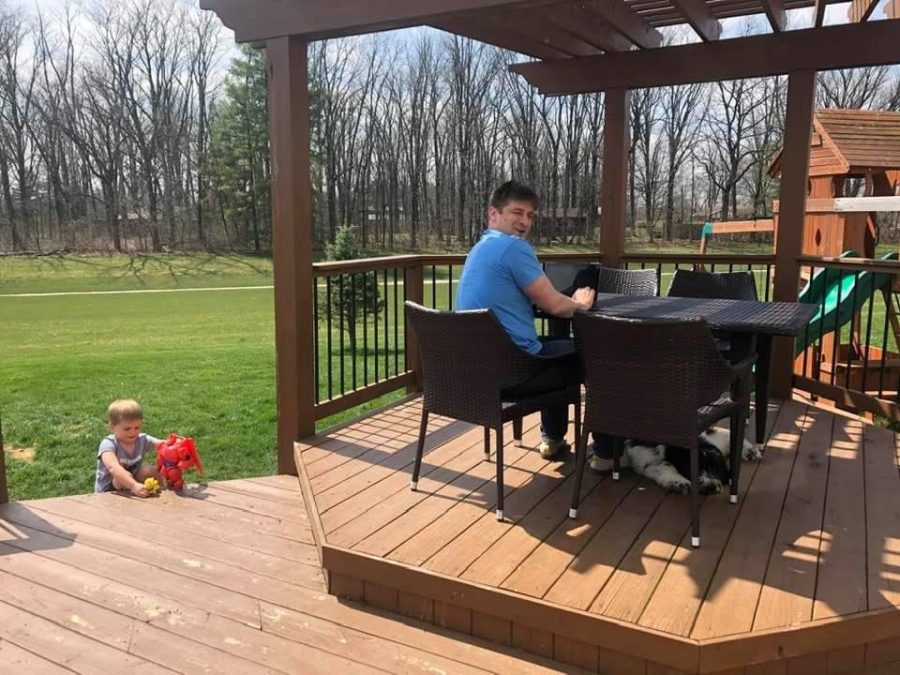Finding other ways
What was previously an impediment is today a tool for teaching
English teacher Matt Welches enjoys an afternoon at home, while learning how to interact with students virtually
April 23, 2020
Put that phone away, it’s a phrase we’ve all probably heard more than once. Whether it was addressed to you, to a friend or classmate, this phrase could never be missing in a classroom. The cellphones were a big distraction for most students in the learning environment. But now instead of keeping your phone in your pocket, you have to take it out.
Due to the Covid-19 epidemic, cellphones and other electronic devices have become an essential resource for the school. But how exactly is this happening? The reality is that the apps that previously seemed to distract students from learning are a help for them to learn. Since the closing of the school was sudden, the teachers have had to manage to discover new teachings techniques.
While all teachers face this challenge, English teacher Matt Welches tells us about the strategies he uses. And in fact, Welches is one of the teachers who not only limits himself to using Google Classroom, Its Learning or email. An app that he uses is TikTok, where he posts some weekly videos, and shares those on Twitter.
This app may sound like a not so good option, since it is full of all kinds of videos that can easily hook anyone. But Welches saw a good opportunity working with it and took it.
“My IMPACT students and I started making a Tik-Tok every Thursday as a team building activity, and I started making videos during the outbreak as a way to let them know that I missed them,” said Welches, who share the videos on Twitter with the #wearewayne hashtag.
The result? He didn’t only stay in touch with his IMPACT class, but he started getting likes, retweets and even former students have contacted him again.
Although the pandemic has changed all the teachers lesson plans, he has figured out multiple ways to connect and reach out students. The students are also learning how to work together and help each other.
“If a student posts a question in my classroom while I am asleep, then another student might answer it before the next day,” said Mr. Welches, who said that next school year he will have more lesson plans and implement more technology in his classes.
This change has not been easy for him as he must also deal with his responsibilities at home, but he has good advice for all students:
“Figure out what you want out of this time,” he said. “The habits you develop now will carry over to adulthood. You do not have a lot of planned structure in your day. The bell is not telling you where to go and when to be there, so it’s a very adult form of learning.
“ Focus on the good things you have currently, rather than what you are losing. For example, you are getting more time with your family than you have had since before you were in elementary school. When you leave for adulthood, you might not see them as much as you would like. For example, I grew up in Northwest Indiana, two hours from here. I can’t go and see my parents and brother very easily. So, take as much advantage of this time as you can”
This change is new, which is why we are all learning from it. If you are a student who needs help, ask for it. All teachers like Welches are looking for a way to help you more, but if you don’t tell them they won’t know how or when to do it.



